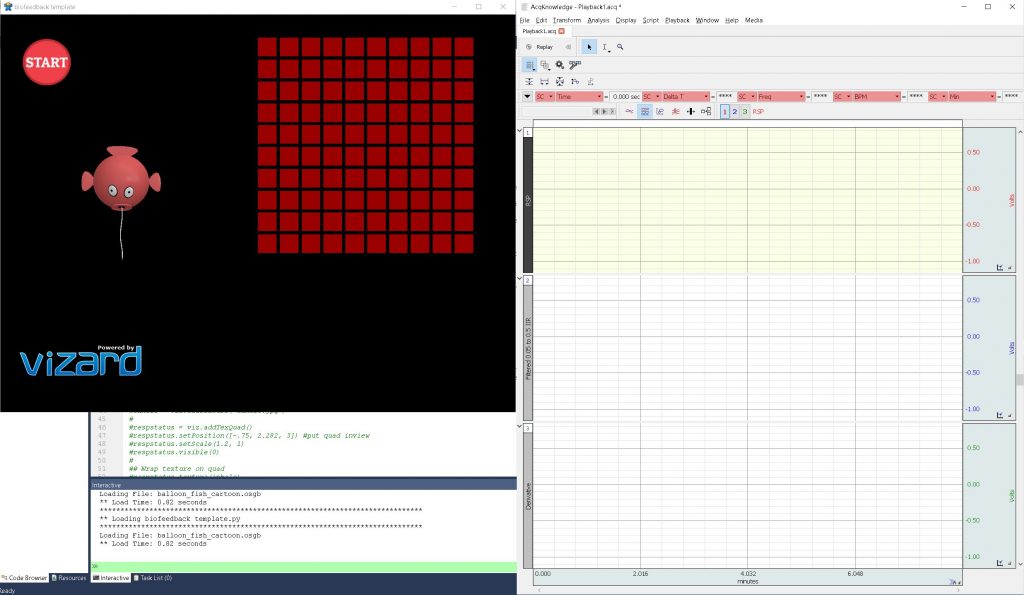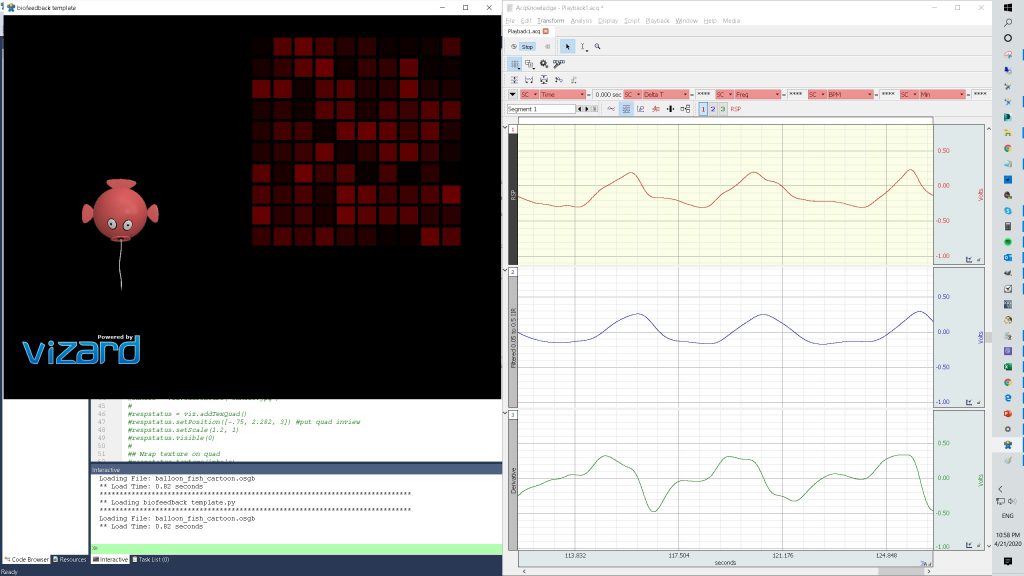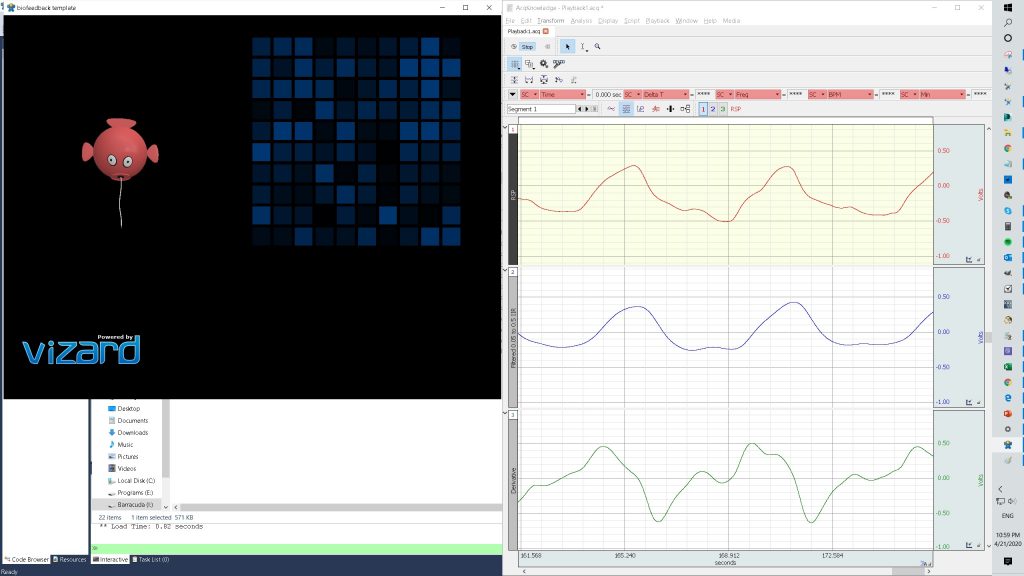Script 058 – Biofeedback and VR
Version:
1.0Description
This script presents a biofeedback example showing how physiology data from AcqKnowledge can change the Vizard display.
It is set up to be driven by respiration as a default (but you could apply any signal type) so that as we inspire a number of tiles arranged in a grid turn various shades of blue, and during expiration, they turn various shades of red. The intensity of the color changes/transparency levels of the tile are influenced both by incoming physio data and a random generator. Additionally, an object (currently a cartoon balloon fish) moves up and down depending on incoming data. There is also a capability to display different 2D images depending on signal state.
Script download VR-Biofeedback.zip under Associated Files below contains setup instructions, sample data file, and BIOPAC Basic Script. The sample data file shows three channels of data in AcqKnowledge: the top channel (red) is the original resp signal; the middle channel (blue) is an intermediate filtering step, where we have corrected for drift and high frequency components in the respiration signal.; the bottom (green) channel is the derivative of the filtered respiration signal.
The following figures illustrate how physiology data (Exhalation Fig. 2 and Inhalation Fig. 3) can influence the Vizard display.

Figure 1. Program ready to start

Figure 2. Exhalation: Tiles illuminating in red and the balloon going down as the third channel in AcqKnowledge, the derivative of the respiration signal, dips low, indicating a fast exhalation.

Figure 3, Inhalation: Tiles illuminating in blue and the balloon going up as the third channel in AcqKnowledge, the derivative of the respiration signal, is well above zero and slightly past the peak, indicating that the participant is inhaling and is just past the peak rate of chest expansion.
Watch the demo!
Stay Connected